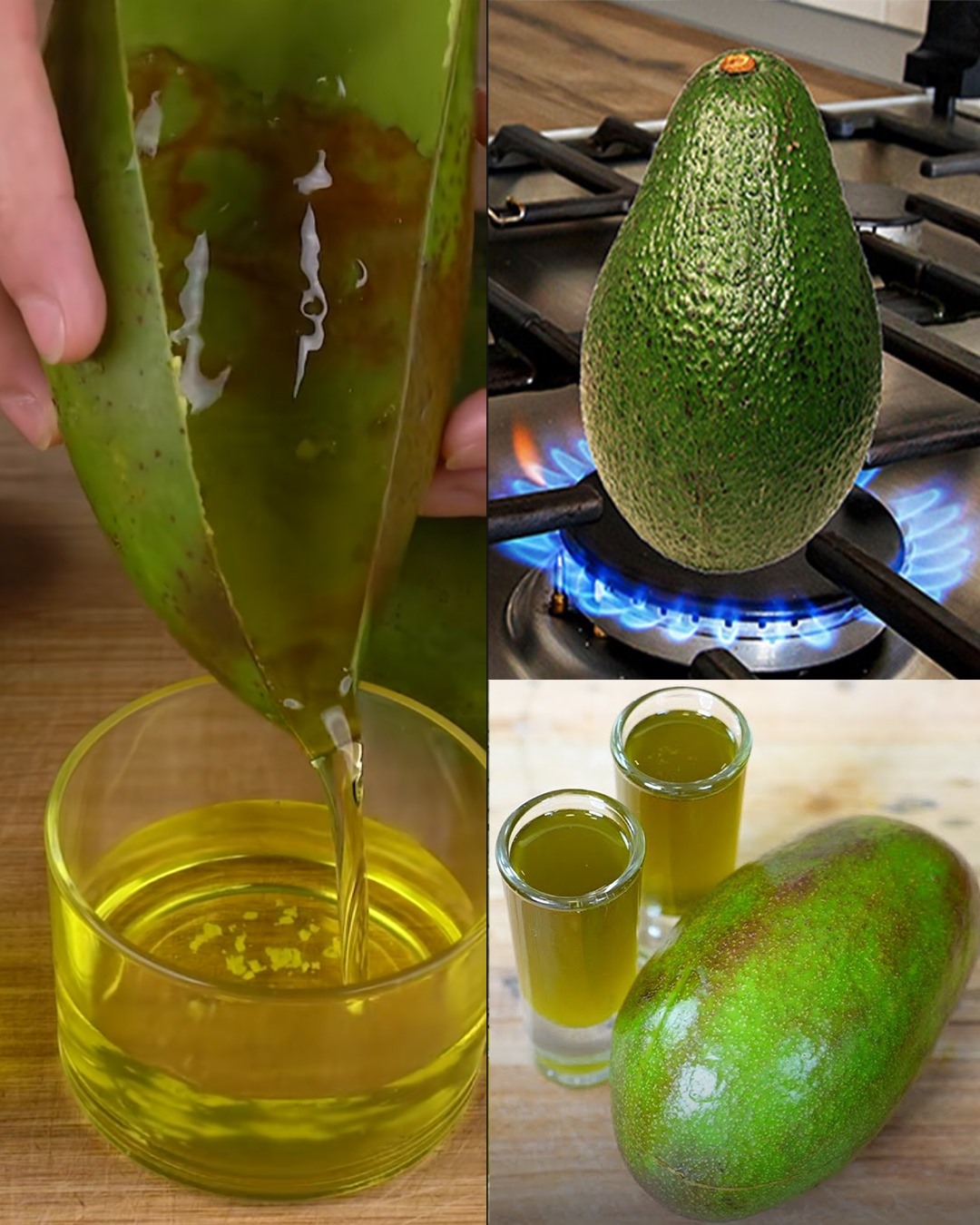INGREDIENTS:
- 6–8 ripe or damaged avocados (soft, slightly brown, or bruised is fine—avoid moldy or rotten ones)
- Clean water (for rinsing)
- Cheesecloth or fine strainer
- A clean glass jar or bottle for storage
INSTRUCTIONS:
- Select and Clean the Avocados:
Choose avocados that are soft, overripe, or slightly damaged but still safe to eat. Avoid any with mold or foul odor.
Rinse them thoroughly under clean water to remove dirt or residue. - Extract the Pulp:
Cut each avocado in half and remove the pit. Scoop out the flesh into a large bowl.
Discard any blackened or spoiled areas. You want the soft, oily green flesh. - Mash and Heat:
Mash the avocado pulp thoroughly using a fork, potato masher, or food processor until smooth.
Transfer the mashed pulp into a wide, nonstick pan or skillet.
Heat over low flame, stirring occasionally. The goal is to gently cook and dehydrate the pulp without frying it.
Continue heating for 45–60 minutes. You’ll notice the oil beginning to separate and rise to the surface. The pulp will darken and shrink. - Cool and Strain:
Once the oil has visibly separated and the pulp is dry and crumbly, remove from heat and let it cool slightly.
Place a cheesecloth or fine strainer over a bowl or jar. Spoon the mixture into the cloth and squeeze gently to extract the oil.
You may need to press or twist the cloth to release every drop. The oil should be golden-green and aromatic. - Store the Oil:
Pour the strained oil into a clean glass jar or bottle.
Store in a cool, dark place. Use within 1–2 months for best freshness.
For longer shelf life, refrigerate and always use a clean spoon when scooping.
